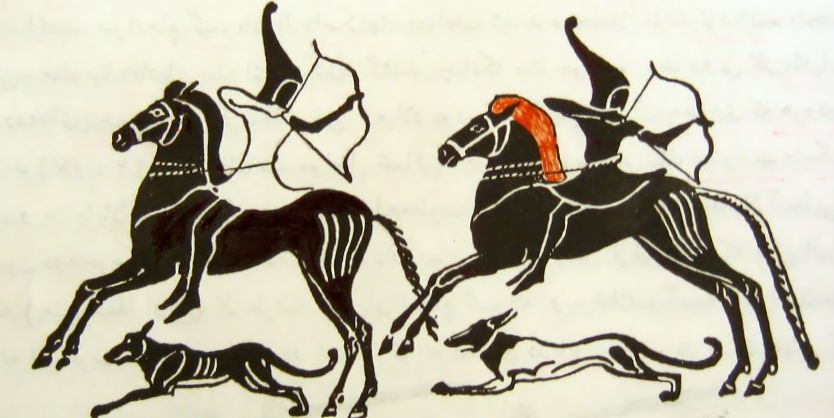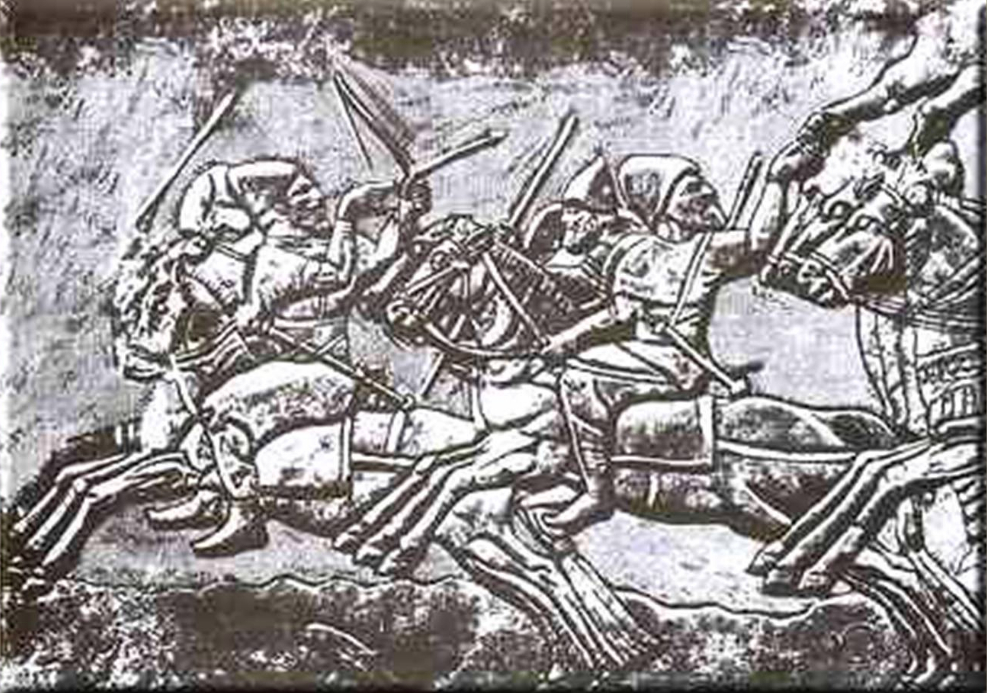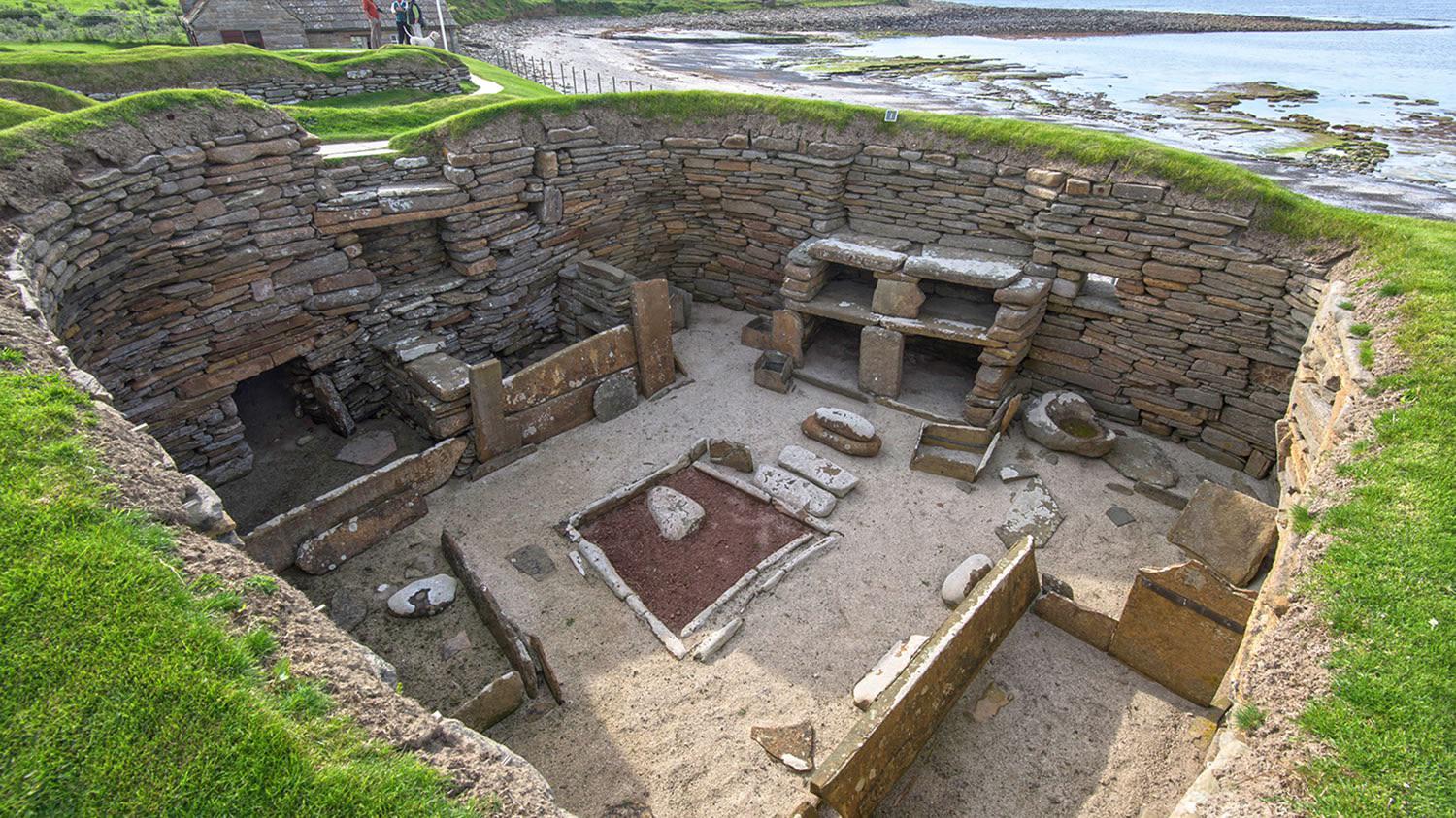During the early 1930s, the name “Cimmerian” gained popularity thanks to Robert E. Howard, a writer known for his pulp fiction novels. Howard used this term to describe the race to which his protagonist, Conan the Barbarian, belonged. Howard first envisioned the Cimmerians as strong, dark-haired Celtic warriors, but other authors ascribed them to Germanic and Norse traits.
Howard perceived his old lineage as the progenitors of the Gaelic Celts in Ireland, Scotland, and the Isle of Mann. In Howard’s portrayal, these “Gaelic” Cimmerians migrated and established themselves in Cornwall and southwest Wales. The migration occurred between the late Roman and early “Arthurian” periods, specifically from 330 to 550 A.D. During this tumultuous period, the Welsh forebears embraced the Latin name “Cimbrgi,” which denoted “fellow countrymen” in contrast to the English tribes invading their land. Over time, this title gradually transformed into the current name employed by the contemporary Welsh people, Cymru/Cymry. The concept of the Cimmerian being associated with what Howard called the “Black Irish” remained consistent throughout the development of his Hyborian Age and the composition of the initial Conan stories.
Howard knew that the historical Picts mainly were Brythonic. Still, he acknowledged that the individuals he designated as Picts were a short, dark-skinned Neolithic population that arrived in the British Isles before the Celts. The ethnicity of Neolithic, Copper Age, and Bronze Age peoples is still highly speculative.
The Cimmerians were first mentioned in classical scholarship in The Odyssey. The Encyclopedia Americana characterizes them as an old group that is part mythological and part historical. Within his concise paper titled “Cimmerians and Scythians,” W.H. Fasken discusses the ancient roots of this race: “Homer likely existed in the 9th century B.C., but the poems were likely not recorded until a later time.” The Kimmeroi, as described by Homer, resided in Oceanus, a region enveloped by a dense layer of mist and clouds. Robert Graves proposes an alternative origin for the Homeric epics, suggesting that they were based on oral literature brought to Greece by travelers from the far North and later adapted to a Mediterranean geography instead of a Norse one. William O’Connor, Morris, and Ridgeway also support that Cimmeri and Cimbri are likely the same race. This statement unequivocally suggests that Homer’s Cimmeria is located in Northwestern Europe. (Source: Fasken, pages 3-4)

Various written records beyond Homeric literature explicitly mention the Cimmerians, and recent archeological investigations in modern Ukraine and European Russia have confirmed that the Cimmerians were a genuine ethnic group residing to the North of the Black Sea. (“Cimmerians Rise in Russia” e-notes 2007). Additional excavations have revealed that the Cimmerian culture partially originated from the “Srubna culture,” which displaced the previous Catacomb culture between 2000 and 1200 B.C. Several stone stelae discovered in Ukraine and the Northern Caucasus have been linked to the Cimmerians. Their style distinctly differs from the later Scythian and the earlier Yamna/Kemi-Oba stela. Homer briefly mentions them in the Odyssey. What is the significance of the Cimmerians? Their fleeting appearance on the global platform suggests a population with limited inherent worth. However, the materials suggesting a connection between the legendary Norsemen and the Cimmerians necessitate additional examination. This demonstrates a significant connection to our Caucasian ancestry.
The prehistoric origins of the Cimmerians may be obscured in the historical record, but their Indo-European-speaking and Aryan cultural connections have been verified. It has been confirmed that they spoke a variant of either the Iranian or Thracian language. Their language was either Iranian or Thracian, and it is believed they had a governing class of Iranian descent. Several German and Celtic tribes assert their lineage from these ancient populations. The current Celtic and Teutonic communities have cultural practices that suggest a lineage from the ancient “Cimmerians or Scythians,” and some of their ethnic names support this notion (such as Cymru, Cwmry, or Cumbria, Cimbri). The entry of Proto-Celtic and Proto-Germanic into Europe as late as the seventh century B.C. is improbable. Their development is typically linked to the Bronze Age Urnfield and Nordic Bronze Age cultures. It is possible to consider that migration of “Thraco-Cimmerian” people in the eighth century, although modest in terms of population, caused cultural changes that played a role in the evolution of the Urnfield culture into the Hallstatt culture, marking the beginning of the European Iron Age.
The Cimmerians are believed to have had several branches. The Thracians have been identified as a potential western offshoot of the Cimmerrians. According to Herodotus, both ethnic groups first resided on the northern coast of the Black Sea. They were both forced to leave their lands at approximately the same period due to the arrival of invaders from the eastern regions. The Cimmerians left their native area by traveling southeast across the Caucasus, whereas the Thracians traveled southwest into the Balkans, where they developed a long-lasting culture. The Tauri, the initial residents of Crimea, are occasionally recognized as a population connected to the Thracians.
The Cimmerians were the pioneers in horse domestication. They highly regarded the horse and paid meticulous attention to its well-being. They even included horses in the funeral rituals of warriors. The horse initiated the beginning of a migratory and martial way of life. The conventional and military lifestyle of the Cimmerians was further developed and refined by their successors, namely the Scythians, Huns, and Mongols, resulting in significant effectiveness. The presence of these distinguished cavalry units in these cultures gave them a considerable edge over neighboring nations in the region.
This can be compared to fighting in the twentieth century. The German armored divisions, together with the sophisticated Stukas and highly mobile infantry, developed a strategy referred to as “blitzkrieg.” This was successful for a certain period. Western and Eastern allies struggled to comprehend this novel kind of warfare as they recalled the days of trench warfare from the Great War. The Cimmerians could easily acquire and incorporate more considerable territory without facing opposition from the Scythians, who would eventually remove them. The emergence of the Cimmerians presented a novel and unforeseen menace that could not be disregarded. The Cimmerians will soon come into contact with the kingdom of Uratu, which existed before modern-day Armenia. The Cimmerians’ arrival on the plains north of the Caucuses threatened the region’s stability. In 720 B.C., King Rusa of Urartu launched a preemptive strike against the Cimmerian army but was ultimately defeated.
Consequently, the Cimmerians launched an invasion and pillaged the entire region. The fatalities and insatiable desires of the fighters should not be overlooked. The Crimean Peninsula is named after the Cimmerians, mentioned in Homer’s works and Near Eastern sources. Howard likely chose the name due to its phonetic similarity to the Welsh Cymry and possibly the Cimbri, a Germanic tribe that battled the Romans.
Several legends were also created to portray racial continuity among the Cimmerians. Scythians and Gaels. According to accounts, the Scythians joined forces with the Greeks to launch a decisive assault on the Philistines and shifted their focus onto the Assyrians. Paradoxically, the stories failed to fully exploit the hostility between the Greeks and their archenemy, the Persian Empire.
During this age, the warmer southern regions achieved a high level of sophistication due to the settlement of Aryans and proto-Nordic individuals alongside members of the Old European or Mediterranean race. The brunette culture had close interactions with the Eurasian nomads, which could have resulted in their sharing of genetic and cultural similarities.
H.G. Wells examines this period in his renowned nonfiction book, “An Outline of History,” Between 15,000 and 10,000 B.C., a heliolithic culture existed worldwide, with people traveling in canoes across large bodies of water. At that time, it was the most advanced civilization globally, supporting the largest and most sophisticated societies. According to Elliot Smith, the origins of this distinctive Aryan culture could be the Mediterranean and North African regions. It traveled gradually, progressing from one age to another. The spread of this phenomenon along the Pacific Coast and across the island stepping-stones to America continued long after reaching other regions such as the East Indies, Melanesia, and Polynesia. These areas were still in the heliolithic stage of development when European navigators encountered them in the eighteenth century. The initial civilizations of Egypt and the Euphrates-Tigris Valley likely emerged directly from this prevalent culture. (Wells, pages 109-111).
Conclusion
In our quest to understand this mysterious band of nomads known as the Cimmerians, we looked to the past, present, and future via myth, archaeology, and history prisms. Throughout our investigation, we have traversed many epochs, piecing together stories and pieces of evidence to reveal a long-lost, mysterious, and enduring civilization.
Historians and scholars are still trying to make sense of the Cimmerians’ identity, family history, and legacy as they try to piece together a tale that blurs the lines between fact and fiction. First mentioned in the writings of old civilizations like Urartu and Assyria, the Cimmerians are pictured as fearsome fighters who swept down from the steppes like a whirlwind, bursting out of the primordial haze of prehistory. Their reputation for fast and devastating raids made them feared all across the ancient world, and their enemies drew terror from them.

Patrick Chouinard is a distinguished expert on European history and authority on the White race and its roots. He has a BA in Global History and European Studies and currently is seeking an MA in Ancient and Classical History. He has authored six books and is a regular contributor to notable publications such as Ancient American magazine, The Barnes Review, Renegade Tribune, and Nexus. His expertise spans various facets of European history, showcasing a deep understanding and commitment to disseminating historical knowledge.




